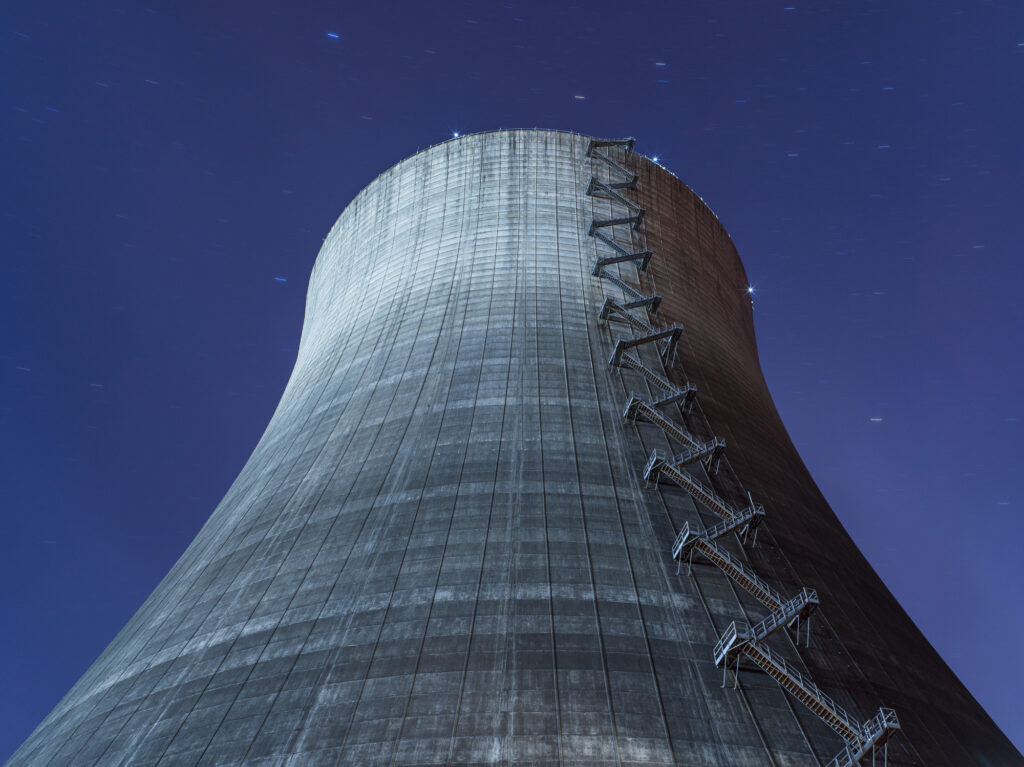Long the focus of regulators in their efforts to clean up the air, the automobile has become so clean there are now cases where the air coming out of the tailpipe is cleaner than the surrounding air.
This progress was not made overnight, nor was it made because of a single technology. Instead, it was a result of continuous improvements by the automobile industry, coupled with necessary improvements to automotive fuels.
The initial focus was on emissions of carbon monoxide (CO) from all vehicles and emissions of black smoke from diesels. With the demonstration in the 1950s that Los Angeles smog could be generated by irradiating hydrocarbons (HCs) and nitrogen oxides (NOx) in sunlight, they were added to the list of emissions to be controlled.
The 1970 Clean Air Act identified CO, NOx, HCs, and total suspended particulates among the air pollutants called “criteria pollutants”–ones that required National Ambient Air Quality Standards (NAAQS)–and charged the U.S. Environmental Protection Agency (EPA) with the establishment of vehicle emission standards.
The automobile industry realized such emission standards could be met only by using new technologies, and one of those technologies was the catalytic converter for exhaust gas cleanup.
1960s: The First Controls
As the air quality in U.S. cities deteriorated due to more vehicles being driven more miles, it became clear automobile emissions had to be controlled. The sources of automobile emissions were identified. HCs came from three sources: exhaust, evaporative, and crank-case emissions, while CO and NOx came solely from exhaust emissions.
The first control device, implemented in 1961 in California and 1963 nationwide, was the positive crankcase ventilation system. This simple system recycled HCs from the crankcase to the intake manifold so they could be burned in the engine rather than letting them be vented to the atmosphere.
| Table 1. U.S. light-duty vehicle emissions standards | ||||||
|---|---|---|---|---|---|---|
| Model Year | Federal Tailpipe Standards* (g/mi) |
% Reduction | ||||
| HC | CO | NOx | HC | CO | NOx | |
| Pre-control | 10.5 | 84 | 4.1 | n/a | n/a | n/a |
| 1968 | 6.3 | 51 | n/a | 41 | 39 | n/a |
| 1970 | 4.1 | 34 | n/a | 61 | 60 | n/a |
| 1972 | 3.0 | 28 | n/a | 72 | 67 | n/a |
| 1973 | 3.0 | 28 | 30 | 72 | 67 | 27 |
| 1975 | 1.5 | 15 | 3.1 | 86 | 82 | 24 |
| 1977 | 1.5 | 15 | 2.0 | 86 | 82 | 51 |
| 1980 | 0.41 | 7.0 | 2.0 | 96 | 92 | 51 |
| 1981 | 0.41 | 3.4 | 1.0 | 96 | 96 | 76 |
| 1994(a) | 0.25 | 3.4 | 0.4 | 98 | 96 | 90 |
| 2001 | 0.075 | 3.4 | 0.2 | 99 | 96 | 95 |
| 2004(a) | 0.075 | 3.4 | 0.05 | 99 | 96 | 99 |
| *Based on (or adjusted to the equivalent of) the 1975 Federal Test Procedure; (a)First year of multi-year phase-in. | ||||||
The first exhaust or tailpipe standards, for HCs and CO, took effect in 1966 in California and 1968 at the federal level. Table 1 identifies tailpipe emission standards over time, and the corresponding percentage reductions compared to pre-control levels.
1970s: The Catalytic Converter
The 1970s saw the emergence of several major vehicle control technologies. In response to the first evaporative emission standards in 1970, carbon canisters were installed on vehicles to capture evaporative HCs that were previously vented to the atmosphere. HCs are purged from the canister during engine operation and burned in the engine.
The first NOx controls were also implemented in the early 1970s. Exhaust gas recirculation systems were installed that routed some of the exhaust back into the air-fuel mixture entering the engine. This lowered the amount of NOx formed, by lowering the combustion temperature, since NOx is formed at high combustion temperatures.
The 1970s also saw the emergence of the catalytic converter, probably the most important vehicle emissions control device ever implemented. Catalytic converters, which are placed downstream of the engine, contain precious metals (such as platinum, rhodium, and palladium) spread over a large surface area. When the pollutants come into contact with the metals, chemical reactions convert the pollutants to nontoxic components.
The first catalytic converters were installed on 1975 vehicles and were referred to as oxidation catalysts because they oxidized the HCs and CO to carbon dioxide (CO2) and water vapor.
1980s: In-Use Performance
As Table 1 shows, federal tailpipe emission standards were made substantially more stringent in 1981. These standards were very challenging.
Three-way catalytic converters were developed to control all HCs, CO, and NOx simultaneously. For these catalytic converters to operate properly, the air-fuel ratio had to be maintained. That required closed-loop fuel control using feedback from an oxygen sensor placed downstream of the engine. The introduction of, and improvements to, fuel-injection systems in place of carburetors over the course of the 1980s enabled much better control of the air-fuel ratio.
However, testing of in-use vehicles at higher mileage showed the emissions were significantly higher than preproduction certification results, with a large percentage of the vehicles tested exceeding the standards. Manufacturers shifted their focus to in-use performance, resulting in much better emission performance in the late 1980s and early 1990s, with the vast majority of light-duty vehicles tested passing standards. Even though standards did not change much over more than a decade, the shift in focus to in-use emissions has been critical to the improved emission performance of the automobile to this day.
Other ways to improve in-use performance also were used. First-generation on-board diagnostic systems (such as OBD I) were implemented in the 1980s. OBD I monitored the performance of certain emissions control systems in-use and alerted the driver about malfunctions via a dashboard light. States also initiated inspection/maintenance (I/M) programs. The effectiveness of I/M programs has been a topic of considerable debate, as there have been ongoing questions about the accuracy of the testing and effectiveness of the repairs.
1990s: No Stone Unturned
While most of the efforts over the past 30 years focused on meeting tailpipe and evaporative emission standards during typical operating conditions, the 1990s introduced myriad new requirements to ensure low emissions under the most severe operating conditions. Cold weather and hot weather requirements were introduced.
Onboard Refueling Vapor Recovery standards were established to ensure the fuel vapors displaced during refueling would be captured by the evaporative emissions canister and later burned in the engine.
Tighter tailpipe standards also were adopted in the 1990s. Rapid advancements were made in catalyst technology, resulting in more temperature-resistant catalysts that could be placed closer to the engine. By 2001, low-emission vehicles (LEVs) were rolled out by automakers nationwide via the National LEV (NLEV) program. The NLEV program was developed by the automobile industry, states, and EPA as an alternative to individual states adopting the California LEV standards, providing a more rational approach to achieving the additional emission reductions the states desired.
In addition to new test procedures and tighter standards, the focus on in-use emissions continued with the introduction of far more sophisticated, second-generation on-board diagnostic systems, referred to as OBD II. OBD II systems monitor all of the emission control systems and components on a vehicle throughout the lifetime of the vehicle. The system allows more than 100 different diagnostics for a typical vehicle, any of which will illuminate a dashboard light if a malfunction is detected, informing the operator the vehicle needs to be taken in for service.
Tighter Standards in California
California adopted cleaner low-sulfur gasoline requirements as an integral part of its LEV program. A unique element of the California LEV program is its zero-emission vehicle (ZEV) mandate. As originally adopted, the ZEV mandate required 10 percent of all cars and certain light-duty trucks sold in the state to be ZEVs.
The ZEV mandate was different from all other emission standards in that it attempted to force the mass production of a specific technology: battery electric vehicles. However, battery electric vehicle technology never became competitive in the marketplace, primarily due to the high cost and limited energy storage capacity of the batteries, which limited how far a vehicle could travel before the battery needed to be recharged, a process that took several hours.
As a result, the ZEV mandate has been delayed and modified several times and has been unsuccessful compared to the advances made in response to the performance-based emission standards.
2000s: Eliminating the Remainder
While the technology advancements of the 1990s brought the emission performance of new vehicles to levels once thought impossible, the requirements adopted in this decade are basically about eliminating the little that is left.
Two major programs, the federal Tier 2 standards and the California LEV II standards, are reducing allowed emissions to near-zero levels not only for passenger cars but also for light-duty trucks (such as SUVs, pickups, and vans) by requiring that these vehicles meet passenger car standards.
Cleaner low-sulfur gasoline will be required on the federal level by the middle of the decade and will result in immediate reductions throughout the in-use fleet while enabling the advanced emission controls needed for the Tier 2 standards. The federal Tier 2 and California LEV II programs will provide large emission reductions over time as older vehicles are retired from the on-road fleet and replaced by these clean new vehicles.
Automakers will continue to make improvements to the emission performance of their gasoline engines. They also will continue to develop hydrogen-fueled fuel-cell vehicles, which have zero tailpipe emissions. While this technology shows considerable promise, its introduction, in terms of timing and volume, is highly uncertain at this time.
The Future: Near-Zero Emissions
To say vehicle emission controls have come a long way in the past 30 to 40 years would be an understatement. Today’s new vehicles have near-zero emissions and employ technology that will keep them that way throughout their on-road life.
| Table 2. Projected emissions inventory for California (annual average emissions in t/day). | |||||
|---|---|---|---|---|---|
| Emissions Source | Year | ||||
| Reactive Organic Gases | 1980 | 1990 | 2000 | 2010 | 2020 |
| Passenger Cars | 2257 | 1158 | 541 | 222 | 104 |
| All Sources | 6658 | 4667 | 3037 | 2204 | 2053 |
| % Passenger Cars | 34 | 25 | 18 | 10 | 5.1 |
| NOx | 1980 | 1990 | 2000 | 2010 | 2020 |
| Passenger Cars | 1261 | 868 | 477 | 194 | 81 |
| All Sources | 5066 | 4931 | 3743 | 2603 | 1955 |
| % Passenger Cars | 25 | 18 | 13 | 7.5 | 4.1 |
| Source: California Air Resources Board. | |||||
To achieve the full benefit of today’s new vehicles throughout U.S. cities will take time, as cleaner vehicles must replace the older, higher-emitting vehicles in the in-use fleet. A projection of this progress over time is shown in Table 2 for California (a similar trend occurs nationally).
On-road reactive organic gas emissions from passenger cars are projected to decrease from 2,257 tons per day (t/day) in 1980 to 104 t/day in 2020, a 95 percent reduction. On-road NOx emissions from passenger cars are projected to decrease from 1,261 t/day in 1980 to 81 t/day in 2020, a 94 percent reduction.
As Table 2 also shows, the reductions from passenger cars are far more dramatic than the reductions from other pollution sources. There is little doubt emissions will fall even further in the future as the auto industry continues down the road toward zero.
James Ehlmann ([email protected]) is manager of vehicle emissions and George Wolff is principal scientist for General Motors Public Policy Center in Detroit, Michigan. A longer version of this article initially appeared in the January 2005 issue of Environmental Management, a publication of the Air & Waste Management Association. Reprinted with permission.



